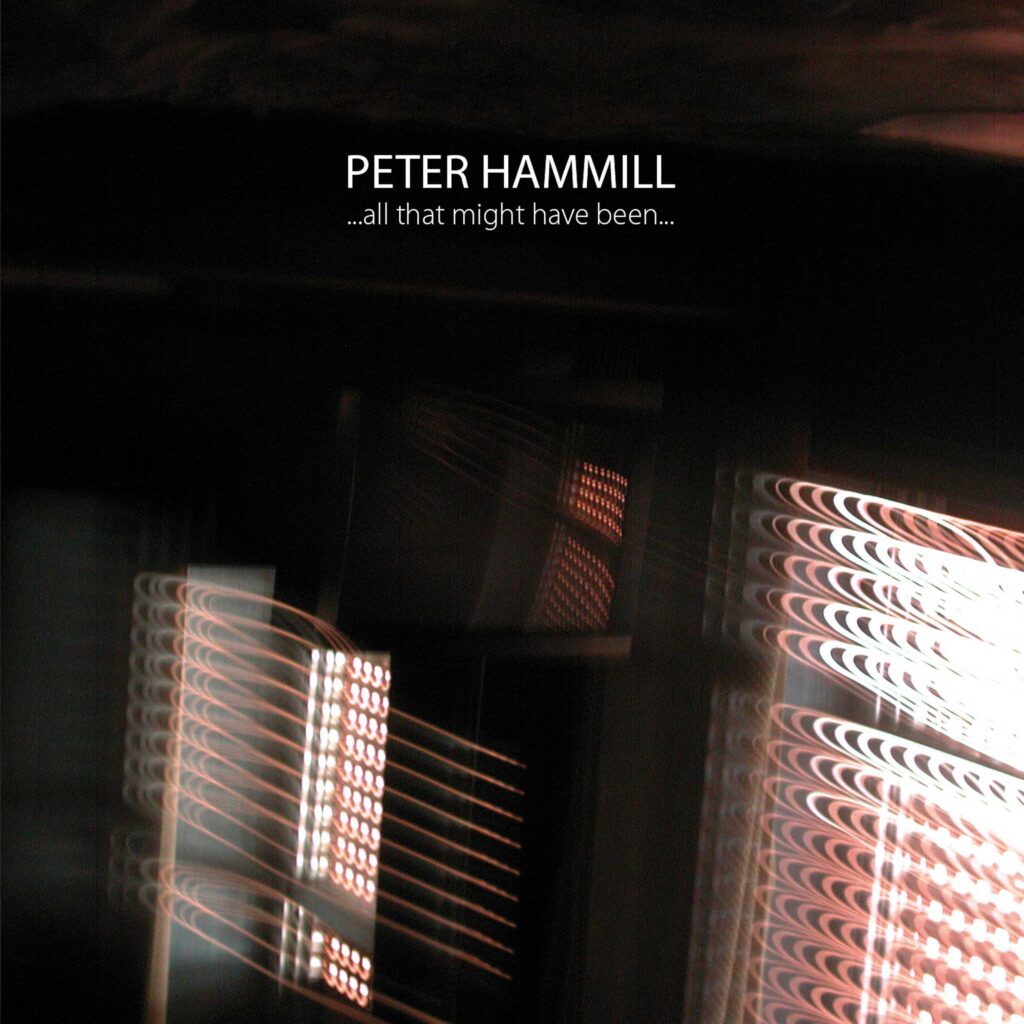For over 40 years, Peter Hammill has been a cult figure in British music. Both solo and with Van der Graaf Generator, he has pursued a highly distinctive career around a seemingly endless series of albums and an unswerving commitment to live performance. Although Hammill’s work over the years has adopted a wide variety of styles – from baroque prog rock to snotty proto-punk, from new wave riffage to elegant chamber music – it’s always been characterised by its originality, its lyrical intelligence and by his magnificent singing voice. A serious heart attack in 2003, far from slowing Hammill down as one might have expected, galvanised him into a late surge of creativity, resulting in a run of albums that include some of his finest music since his acclaimed 1970s work.
With …All That Might Have Been…, Hammill presents another autumnal masterpiece, one of the most sprawling and ambitious albums of his career. The album had a complex gestation that is reflected in its multifaceted presentation – it’s available as a standard CD, a vinyl LP and a 3CD set, all of which offer different perspectives on the same material. As recounted by Hammill in a sleeve essay, the story goes that the music was originally worked up as ten individual songs, self-contained but with a submerged narrative thread running through them, a series of cinematic takes on a relationship. To mark the occasion of a 2013 tour of Japan, Hammill produced a 40-minute "work in progress" CD that presented a continuous mix of the songs as they then stood. Having absorbed the material in this form, Hammill hit upon the idea of cutting the completed songs up into pieces, reordering them and presenting the rearranged fragments as a continuous whole. It’s this so-called ciné version that Hammill regards as the main release of …All That Might Have Been…, and which is presented on the standard CD edition of the album and disc 1 of the 3CD set. The individual songs are presented on the vinyl LP and on disc 2 of the 3CD set, while disc 3 consists of a revised version of the "work in progress" CD.
Although the ciné version is certainly the most rewarding way into this material, it’s also a rather demanding listen, best experienced in a single sitting. Newcomers might prefer to start with the songs CD, which tells the story, murky as it is, in some kind of chronological order. The soundworld is sombre and nocturnal, with looming analogue synths pierced by shards of electric guitar and augmented by spare, restrained percussion. Occasional nervy grooves and bursts of angry riffing disrupt the mostly glacial and dreamlike tempo, and through it all runs Hammill’s unique voice – an instrument of turbulent beauty, richly expressive and filled with existential sorrow. On key tracks like ‘Someday (The Piper Smile)’ and ‘Disrespect (In Kabuki-cho)’ multitracked backing vocals comment on the action in a higher register, adding to the sense of a tale being told from multiple, fractured perspectives.
Hammill’s characters are a man and woman caught up in a stormy love affair. Their relationship is recounted in a series of glancing, allusive scenes, told mostly from the male point of view. By turns lyrical, reflective and conversational, Hammill’s text casts the protagonists into a netherworld of shadowy, neon-lit zones. As the first lines of the first song run, "In overview the light expired, and with it went the narrative he’d always craved." Those craving narrative will indeed find little of solace here, save for a final scene in which "even though he knew this was goodbye for good, he couldn’t tell her, just couldn’t find the words to say."
Drifting fuzzily in time and space, the ciné version takes lyrical and musical elements from all ten songs and stitches them into a single fifty-minute piece. The impact of this technique is striking, cutting the listener further adrift from narrative coherence and lending the enterprise even more of a filmic (albeit European arthouse, not Hollywood blockbuster) quality. Sounds, images and half-buried melodies coalesce, mutate and burn out. We’ve come to expect music of such acute, restless brilliance from Peter Hammill, but this is like nothing he (or anyone else, for that matter) has ever done before. …All That Might Have Been… is a worthy addition to a remarkable body of work.
<div class="fb-comments" data-href="http://thequietus.com/articles/16974-peter-hammill-all-that-might-have-been-review” data-width="550">


